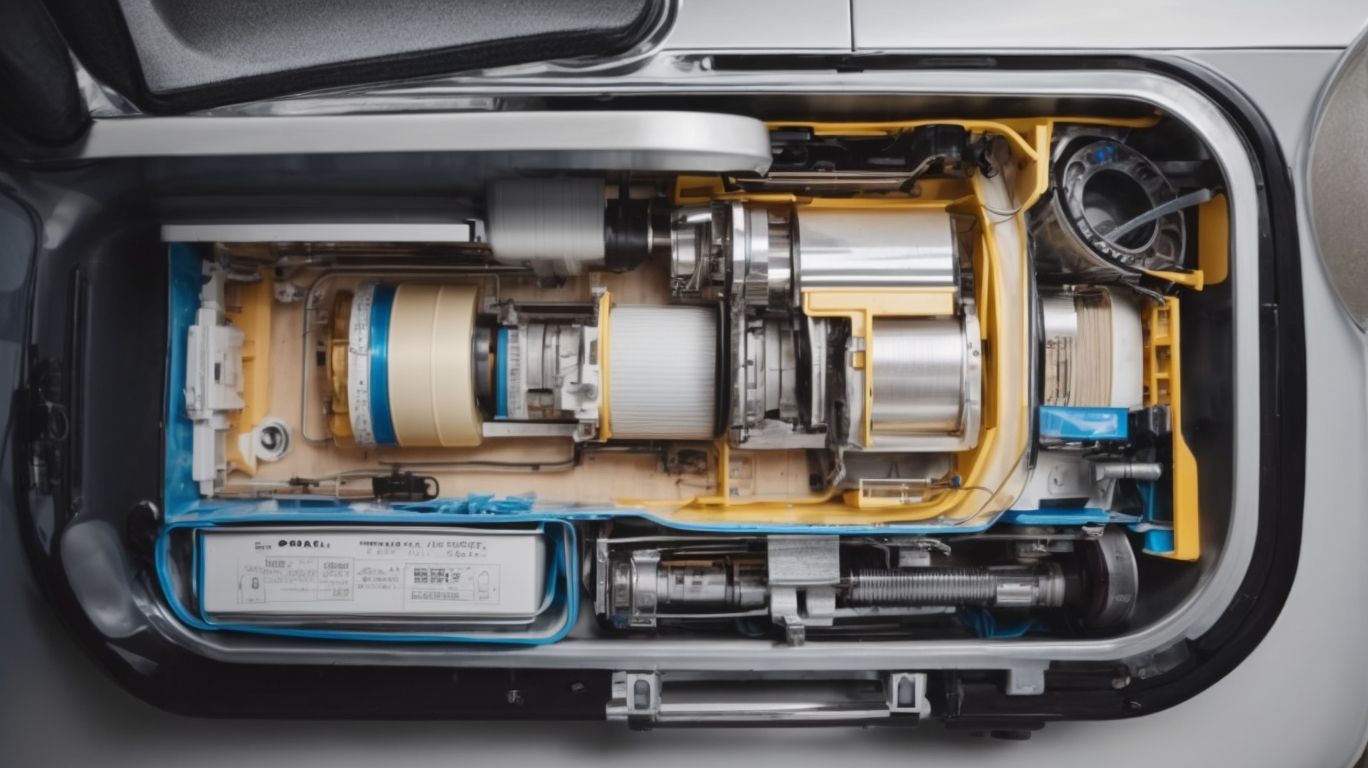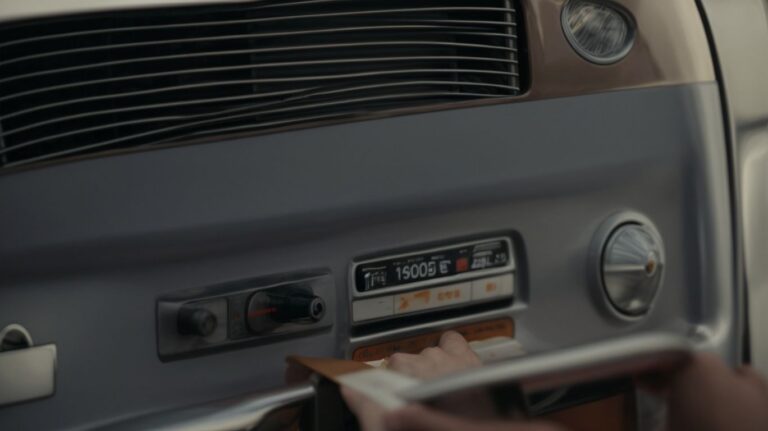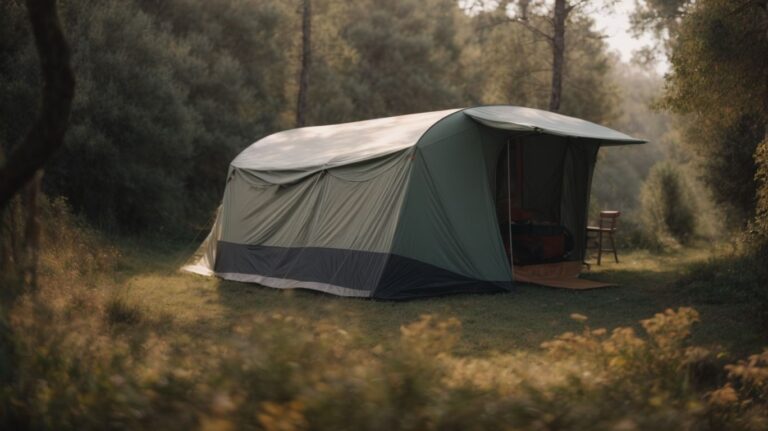A Comprehensive Guide to How Cassette Toilets Work in Caravans
Are you considering installing a cassette toilet in your caravan but unsure of how it works or how to maintain it? Look no further!
In this comprehensive guide, we will explore everything you need to know about cassette toilets. From understanding the flushing mechanism to the different types available, and tips for proper maintenance, we’ve got you covered.
Whether you’re a seasoned camper or a first-time caravan owner, this article will provide you with valuable insights on cassette toilets.
Key Takeaways:
What Is a Cassette Toilet?
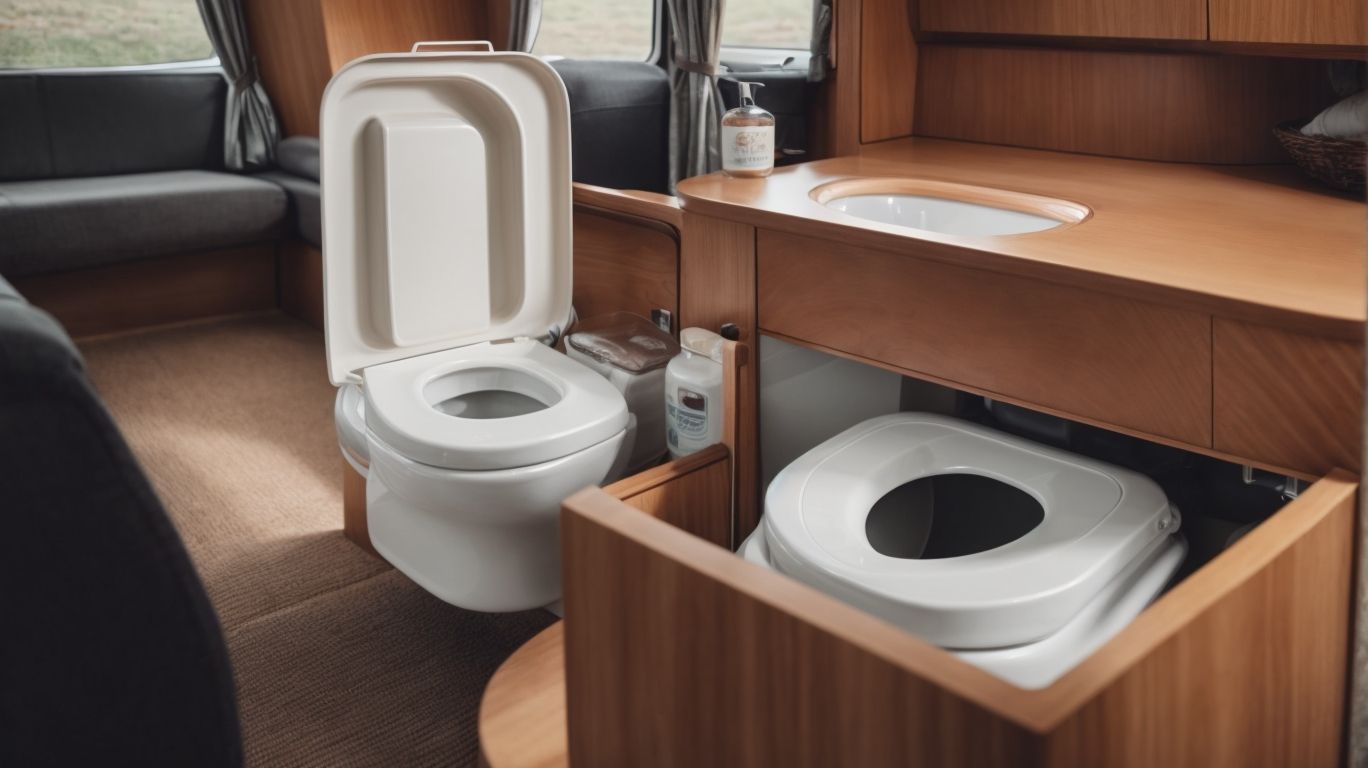
Credits: Motorcaravanning.Com – Keith Nelson
A cassette toilet is a portable toilet commonly used in caravans and RVs for waste disposal.
One of the key features of a cassette toilet is its convenient waste tank, usually located below the seat. This tank can be easily removed and emptied at designated disposal points, making it a practical solution for mobile sanitation needs. The portability of cassette toilets allows travelers to enjoy the freedom of camping without relying on fixed facilities. These toilets are compact in size, fitting seamlessly into the layout of caravans and RVs. With proper maintenance and care, a cassette toilet can efficiently handle waste disposal on the go.
How Does a Cassette Toilet Work?
A cassette toilet operates by utilizing a flushing mechanism to rinse waste into a waste holding tank, reducing odors and maintaining hygiene.
Popular brands like Thetford and Dometic offer cassette toilets designed for camper vans and small RVs. The flushing process typically involves pressing a lever or button to release water into the bowl, effectively rinsing away waste. This mechanism not only helps prevent unpleasant odors but also ensures a clean surface for the next use.
Proper maintenance is crucial for controlling odors in cassette toilets. Regularly emptying and cleaning the waste holding tank, using specialized deodorizing products, and keeping the seals in good condition are essential steps to maintain a fresh-smelling bathroom environment.
Flushing Mechanism
The flushing mechanism in a cassette toilet initiates the flow of liquid to carry waste through the cassette tank and into the waste hose for disposal.
When the flushing lever is activated, it triggers the release of water, often mixed with deodorizing chemicals, to facilitate the movement of waste through the system. The liquid waste travels down through the nozzle and into the holding tank, where it combines with other waste materials. As the tank fills up, this mixture is then directed through the waste hose connected to the bottom of the tank, leading it to the designated disposal point. This ensures a hygienic and efficient way to manage liquid waste in a cassette toilet.
Waste Holding Tank
The waste holding tank in a cassette toilet securely stores waste until it is emptied through the service door at a dump station.
When using a cassette toilet, the waste holding tank plays a vital role in the overall functionality of the system. This tank is specifically designed to contain all the waste generated during toilet usage, keeping it separate from the living area and preventing any odors from permeating the space.
The convenience of easily emptying the tank is a significant advantage of cassette toilets. With the service door located at a convenient access point, users can quickly and hygienically dispose of the waste at designated dump stations. This process ensures proper waste management and maintains cleanliness in the surrounding environment.
Flush Water Tank
The flush water tank in a cassette toilet stores fresh water used to rinse the toilet bowl after each use, ensuring cleanliness and hygiene.
When you press the flush button on a cassette toilet, this stored fresh water is released into the toilet bowl, effectively rinsing away any waste or residue. This helps maintain a sanitary environment and prevents odors from lingering. The fresh water from the tank creates a seal in the waste-holding tank, reducing the chances of any unpleasant smells escaping.
What Are the Benefits of Using a Cassette Toilet?
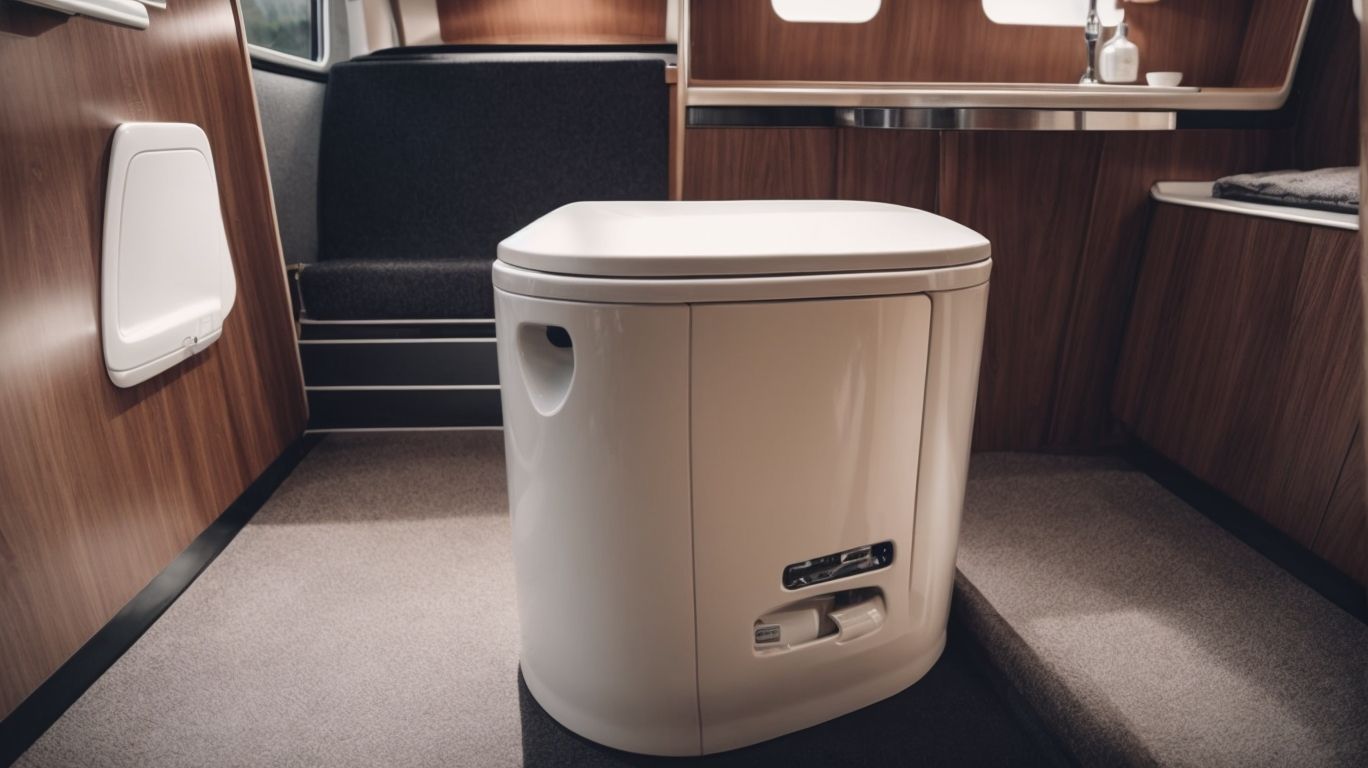
Credits: Motorcaravanning.Com – Tyler Flores
Using a cassette toilet offers benefits such as portability, efficient waste management with a black tank, and ease of emptying for convenient disposal.
Cassette toilets are preferred by many outdoor enthusiasts due to their compact and portable design, making them ideal for camping trips, RVs, boats, or any other situation where traditional plumbing is not available. The black tank in these portable toilets allows for discreet and hygienic storage of waste, minimizing odors and leaks. The easy to empty feature simplifies the process of disposing of waste, requiring minimal effort and ensuring a hassle-free experience for users.
Portability
The portability of a cassette toilet allows for easy transportation and installation in various settings, making it ideal for caravan and RV owners.
One of the key benefits of a cassette toilet is that it comes equipped with a portable waste tank, which can be easily detached for convenient waste disposal when needed. This feature is especially handy for those on the move, such as campers or boaters, who require a toilet solution that adapts to their mobile lifestyle. The compact design of cassette toilets also enables them to fit seamlessly in tight spaces, ensuring efficient use of available room in caravans or RVs.
Water Efficiency
Cassette toilets promote water efficiency by utilizing a limited amount of liquid for flushing, reducing water consumption while maintaining proper waste disposal.
This design ensures that only the necessary amount of water is used to flush waste down the system, saving significant amounts of water over time. In RV and caravan environments where resources are limited, this feature is particularly valuable. The water tank in cassette toilets is designed to efficiently store and handle liquid waste, making it a convenient and eco-friendly choice for travelers. By emphasizing water conservation through efficient design, cassette toilets offer a practical solution for those conscious of their environmental impact while on the road.
Odor Control
Cassette toilets feature effective odor control mechanisms including seals and vents to prevent unpleasant smells and maintain a fresh environment.
The seals play a crucial role in ensuring that odors are contained within the toilet system, preventing them from escaping into the surrounding area. By creating a tight seal when the cassette is closed, these seals effectively trap any odors within the waste tank.
The vents in cassette toilets provide necessary airflow to help further minimize odors. These vents allow for proper ventilation, ensuring that any odors are quickly removed from the toilet compartment, enhancing the overall user experience.
Easy to Empty and Clean
Cassette toilets are designed to be easy to empty and clean, with features like service doors for access and dump stations for convenient waste disposal.
The service doors of cassette toilets are strategically placed to allow users to access the waste compartment without the need to remove the entire cassette, making the emptying process quick and hassle-free. Regarding disposal, many camping grounds and RV parks offer designated dump stations equipped with hoses and facilities for cleaning. Utilizing a dump station ensures proper waste disposal and helps maintain environmental hygiene in outdoor settings.
What Are the Different Types of Cassette Toilets?
Various types of cassette toilets include manual flush models by brands like Thetford and Dometic, as well as electric flush variants for enhanced convenience.
Manual flush cassette toilets, such as those from Thetford and Dometic, are operated by a simple hand pump, offering a traditional yet practical toilet experience in various recreational vehicles and boats.
On the other hand, electric flush models bring a touch of luxury and ease to the process, allowing users to flush with just the press of a button, making them a popular choice for those seeking added comfort and convenience during their travels.
Manual Flush
Manual flush cassette toilets require users to operate a lever or button to initiate waste disposal and are compatible with standard toilet paper for convenience.
When using a manual flush cassette toilet, the user has complete control over the flushing mechanism through the lever or button. This system allows individuals to decide the amount of water needed for each flush, aiding in water conservation efforts. The compatibility with standard toilet paper makes these toilets user-friendly and easy to maintain, as there is no requirement for special toilet paper. Users can simply dispose of used toilet paper in the toilet without concerns of clogging or damaging the system, enhancing the overall experience of using a manual flush cassette toilet.
Electric Flush
Electric flush cassette toilets feature automated flushing systems activated by a button or sensor, directing waste through a flush spout for efficient disposal.
These toilets are equipped with smart technology that allows users to simply press a button or trigger a sensor, initiating the flushing process. Once activated, the system efficiently directs the waste through the flush spout, ensuring proper disposal with minimal effort.
One of the key advantages of electric flush cassette toilets is their convenience and hygiene. By automating the flushing process, these toilets eliminate the need for manual handling of waste, reducing the risk of contamination and promoting a cleaner environment.
Composting Cassette Toilet
Composting cassette toilets utilize innovative systems like the SOG system to naturally break down waste into compost, offering eco-friendly waste disposal solutions.
Composting for waste management involves aerobic decomposition, a process where oxygen-loving bacteria break down organic matter efficiently, reducing the production of harmful greenhouse gases.
The SOG system, short for the “Separate Organic Grid,” is a ventilation system that aids in this decomposition process by ensuring proper airflow within the toilet’s cassette, creating an optimal environment for microbial activity.
This sustainable approach not only minimizes odors but also speeds up the composting process, transforming waste into nutrient-rich humus that can be safely returned to the earth, promoting a circular economy and reducing the burden on traditional sewage systems.
How Do You Empty and Clean a Cassette Toilet?
To empty and clean a cassette toilet, locate a dump station for waste disposal, empty the waste holding tank, and rinse the toilet components for maintenance.
When using a cassette toilet, it is essential to find a suitable dump station for disposing of the waste properly. Many campgrounds, RV parks, and rest areas offer designated dump stations for this purpose. It is crucial to empty the waste holding tank regularly to prevent odors and ensure proper functioning.
Next, carefully remove the waste tank from the cassette toilet unit and carry it to the dump station. Remember to wear gloves and follow any specific instructions provided by the manufacturer. When at the dump station, follow the guidelines for emptying the tank, typically by pulling a lever or releasing a valve to allow the waste to flow out.
After emptying the tank, it’s important to rinse the toilet components thoroughly to remove any residual waste and ensure cleanliness. Use clean water to flush out the tank and the toilet bowl, then make sure to rinse the tank several times to ensure it is entirely clean before securing it back into the cassette toilet unit.
Finding a Dump Station
Locating a dump station is essential for proper waste disposal when using a cassette toilet, with facilities available at designated areas including caravan parks and RV service centers.
When traveling in Australia, knowing where to find these dump stations can make your journey much smoother. Caravan parks often offer dump stations as a convenient service to their guests, allowing for easy and hygienic waste disposal. On the other hand, RV service centers also provide facilities for emptying cassette toilets and refilling freshwater tanks, catering to the specific needs of campers and road trippers.
Emptying the Waste Holding Tank
Emptying the waste holding tank of a cassette toilet involves releasing the contents through a dump spout into a designated waste disposal site or portable tank.
Once the cassette toilet is full, it’s time to tackle the process of emptying the waste holding tank. The dump spout is a crucial component in this operation, as it allows for the efficient disposal of the waste. Ensuring that the dump spout is properly aligned and securely connected is essential to prevent any spills or leaks during the emptying process.
When at a designated waste disposal site, position the dump spout appropriately over the receptacle and open the valve to release the contents. It’s essential to empty the tank completely to avoid any residual waste buildup. Alternatively, utilizing a portable tank for waste transport provides flexibility for disposing of the contents at a suitable location.
Cleaning the Toilet Bowl and Tank
Cleaning a cassette toilet involves using specialized toilet chemicals to sanitize the toilet bowl and tank, ensuring proper hygiene and odour control.
When cleaning a cassette toilet, it is essential to follow the manufacturer’s guidelines on the recommended type and quantity of toilet chemicals to use. These chemicals not only clean the surfaces but also break down waste and help control odors effectively. Toilet chemicals usually come in liquid or powder form, and it’s crucial to add them directly into the toilet bowl or the waste tank according to the instructions.
After adding the necessary toilet chemicals, allow some time for the chemicals to work their magic. This process helps to dissolve waste, prevent build-up, and keep the toilet fresh and hygienic. Regular use of toilet chemicals as part of your cleaning routine can extend the lifespan of your cassette toilet and maintain optimal performance.
What Are Some Tips for Maintaining a Cassette Toilet?
Effective maintenance of a cassette toilet includes using biodegradable toilet paper, lubricating the toilet seal, and regular cleaning to prevent odors and ensure optimal performance.
Regarding using biodegradable toilet paper, it’s essential to select a brand that breaks down easily to avoid clogging the system. Regularly lubricating the toilet seal helps maintain a proper seal to prevent leaks and odors from escaping. Plus the toilet seal, don’t forget to lubricate the vents as well to ensure proper airflow. For cleaning, a mild detergent and water solution can be used to clean the cassette tank thoroughly, while avoiding harsh chemicals that can damage the seals. By following these maintenance tips diligently, you can prolong the lifespan of your cassette toilet.
Use Biodegradable Toilet Paper
Opt for biodegradable toilet paper when using a cassette toilet to prevent clogs and ensure seamless waste breakdown, with options like Dometic Saneo offering eco-friendly solutions.
Biodegradable toilet paper is essential in maintaining the proper functioning of cassette toilets and contributes significantly to efficient waste management. By opting for environmentally friendly toilet paper options like Dometic Saneo, users can reduce their ecological footprint and promote sustainability. Traditional toilet paper often causes blockages and can hinder the decomposition process in cassette toilets, leading to potential maintenance issues. With biodegradable alternatives, such as those provided by Dometic Saneo, users can enjoy a hassle-free, eco-conscious solution for their toilet needs.
Keep the Toilet Seal Lubricated
Regularly lubricate the toilet seal of a cassette toilet to maintain a tight seal and prevent leaks, enhancing the efficiency of the system and reducing water wastage.
Proper lubrication of the toilet seal is crucial to ensure that the seal remains pliable and effectively seals off the connection between the toilet bowl and the holding water tank. By doing so, you minimize the risk of water leaks and odors escaping into your living space. A well-lubricated seal helps in maintaining a more hygienic environment by preventing the accumulation of bacteria and mold.
This simple maintenance task not only improves the overall performance of your cassette toilet but also plays a significant role in water conservation by reducing unnecessary wastage that can occur due to faulty seals.
Regularly Clean and Disinfect the Toilet
Frequent cleaning and disinfection of a cassette toilet, including the portable tank, are essential to maintain hygiene, prevent odors, and extend the lifespan of the system.
It is crucial to perform regular maintenance on all parts of the cassette toilet, paying special attention to the portable tank to prevent the buildup of bacteria and unpleasant smells. To effectively disinfect the portable tank, start by emptying and rinsing it thoroughly with water. Then, use a mild disinfectant or a mixture of water and vinegar to clean the surfaces inside. Allow the disinfectant to sit for a few minutes before rinsing it out completely.
Frequently Asked Questions
What is a cassette toilet and how does it work in a caravan?
A cassette toilet is a type of portable toilet commonly used in caravans. It consists of a toilet bowl, a waste holding tank (also known as a cassette), and a flushing mechanism. The waste is collected in the cassette, which can be easily removed and emptied at designated disposal points.
Why are cassette toilets popular among caravan owners?
Cassette toilets are popular among caravan owners because they are compact, easy to use, and can be installed in any vehicle. They also offer a more hygienic and convenient option than traditional pit toilets, as they can be emptied at designated locations rather than having to dig a hole for disposal.
How do you use a cassette toilet in a caravan?
To use a cassette toilet, first, ensure that the wastewater valve is closed. Then, add a small amount of chemical toilet fluid to the cassette to break down waste and reduce odors. When using the toilet, press the flush button to add water and activate the flushing mechanism. When the cassette is full, remove it from the toilet and empty it at a designated disposal point.
How often do you need to empty a cassette toilet in a caravan?
The frequency of emptying a cassette toilet depends on how often it is used. As a general rule, it is recommended to empty the cassette every 3-5 days to prevent odors and maintain hygiene. However, it should be emptied immediately if it reaches its maximum capacity or starts to smell.
Are cassette toilets easy to clean and maintain in caravans?
Yes, cassette toilets are relatively easy to clean and maintain in caravans. Regularly emptying and cleaning the cassette, as well as adding chemical toilet fluid, can help prevent odors and prolong the life of the toilet. Additionally, the toilet bowl and external surfaces can be easily cleaned with standard household cleaners.
Can a cassette toilet be used in all types of caravans?
Yes, cassette toilets can be used in all types of caravans, including campervans, motorhomes, and trailers. They are designed to be compact and portable, making them a versatile option for any type of caravan. However, it is important to ensure that the toilet is properly installed and securely fastened to prevent any leaks or spills while on the road.

